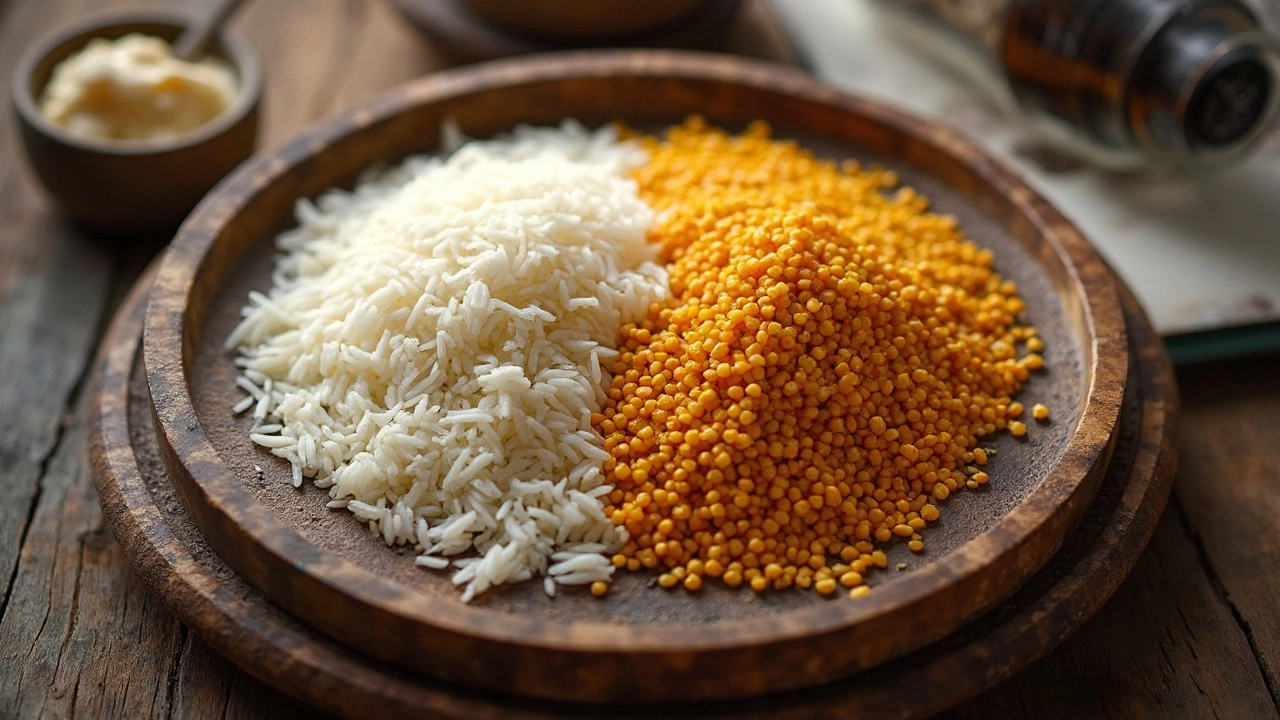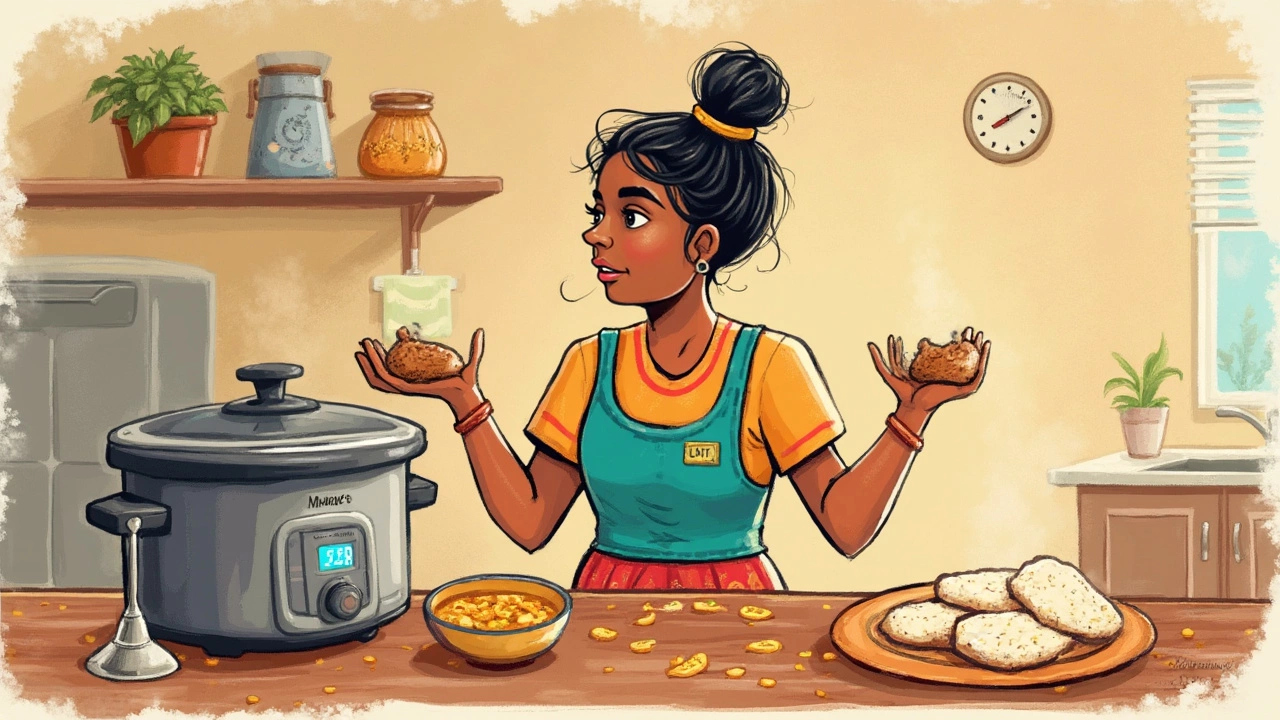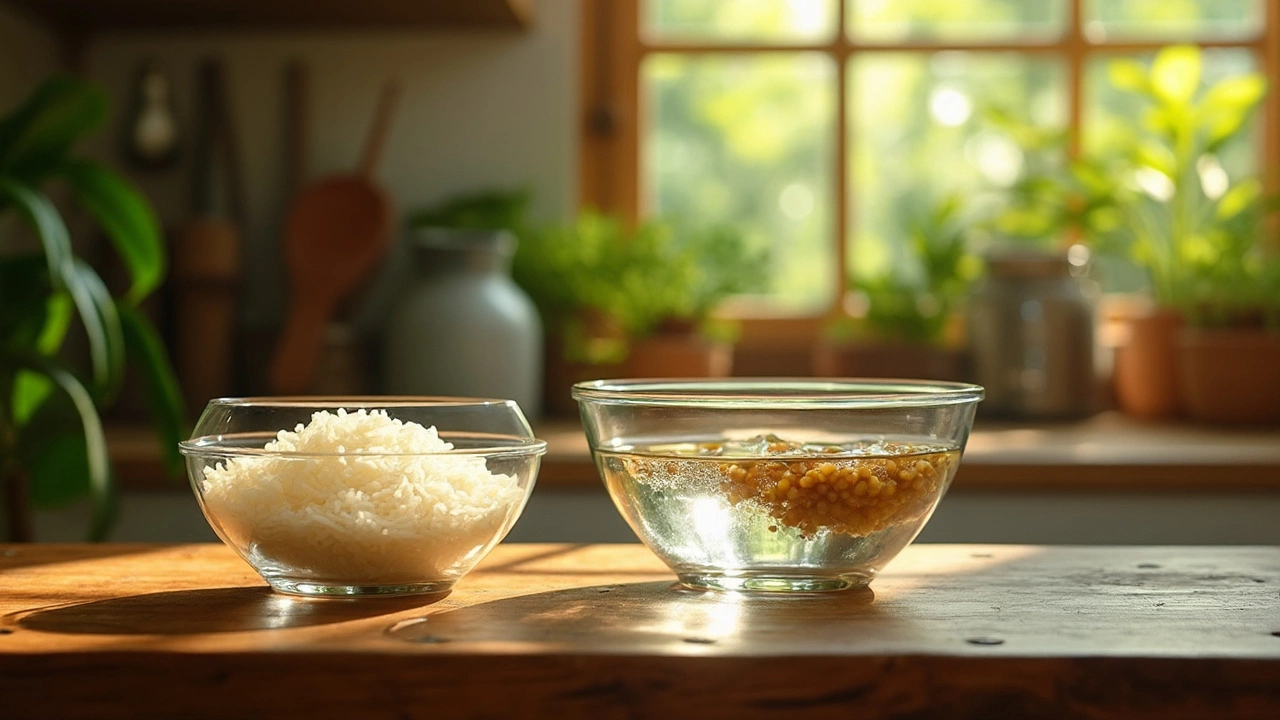If you've ever ended up with dense or gummy idlis, the problem probably wasn't your steamer—it was your soaking time. Rice and urad dal both need enough time in water so they grind up smooth and ferment like a dream. Not enough soaking, and you end up with hard bits in your batter or poor fermentation. Too long, and things might turn slimy or sour, especially in summer.
So, how many hours are we really talking? For most kitchens, 6 hours is the sweet spot for both rice and urad dal. That gives everything time to drink up enough water, soften, and get ready for grinding. But here’s a twist: urad dal actually benefits from soaking even longer, up to 8 hours, if you have the time. This can mean fluffier, lighter idlis that make the whole breakfast worth getting up for.
- Why Soaking Matters for Idli Batter
- Recommended Soaking Times for Rice and Urad Dal
- Soaking Tips for Hot, Cold, and Rainy Days
- Speeding Up the Soaking Process: Kitchen Hacks
- Common Soaking Mistakes and How to Fix Them
Why Soaking Matters for Idli Batter
Soaking the rice and urad dal is not just a box to check off—it totally changes how your soak rice idli batter turns out. When you soak these ingredients, a few important things happen:
- The grains and lentils soften up, which makes grinding them way easier. This gives you a smoother batter, which means lighter, fluffier idlis.
- It kicks off the breakdown of phytic acid. Less phytic acid means your body absorbs more nutrients from the idlis. It’s not just about taste—there’s actual health science behind it.
- Soaked ingredients ferment better. That classic mild sour flavor of idlis comes from natural fermentation, and that only happens well if ingredients are fully soaked.
Let’s get specific. If you take shortcuts and soak for just 2-3 hours, the grains won’t soften. You’ll end up with gritty batter that won’t ferment right. A full soak—6 hours for rice, 6-8 hours for urad dal—helps the grinder do its job, gets you a fluffy raise, and means the batter can trap more air. That’s your secret to soft idlis, not the steamer.
| Ingredient | Minimum Soak Time | Ideal Texture After Soaking |
|---|---|---|
| Rice (Parboiled or Idli Rice) | 6 hours | Breaks between fingers, almost mushy |
| Urad Dal | 6-8 hours | Swollen, splits easily when pressed |
Ever noticed store-bought idli mixes just don’t taste the same as homemade? Most of the time it’s because there’s no slow soak, so there’s less fermentation. Soaking isn’t optional. It’s the first (and maybe most important) step for perfect batter.
Recommended Soaking Times for Rice and Urad Dal
Getting the soak time right is a total game changer for idli and dosa batters. Don’t just eyeball it. Here’s what actually works, whether you’re making breakfast for two or prepping for a big family meal.
For most types of idli rice (like parboiled rice or idli rava) and whole urad dal (without skin), the soaking time is more than just a number—it decides if your batter turns smooth and easy to ferment or you end up with a bowl of heartbreak. For best results:
- Soak idli rice for 6 hours in room temperature water (around 25°C or 77°F).
- Soak urad dal for at least 6 hours, but up to 8 hours if you want extra fluff—especially if you're grinding by hand or using a regular mixer instead of a wet grinder.
Here’s a quick cheat sheet to make it even easier:
| Ingredient | Minimum Soaking Time | Ideal Soaking Time |
|---|---|---|
| Idli Rice | 4 hours | 6 hours |
| Urad Dal (whole, skinless) | 4 hours | 6-8 hours |
| Urad Dal (split, skinless) | 3 hours | 5-6 hours |
If it’s particularly hot in your kitchen, cut the soak by an hour, but don’t go below 4 hours or you’ll risk rough, heavy batter. In colder weather, let it soak up to 8 hours to help soften everything up.
Another useful tip: rinse both rice and dal thoroughly before soaking, and use fresh, clean water. Dirty water hurts fermentation and can make your idlis taste off. And yes, you can soak rice and dal together in a pinch, but soaking them separately gets you a better grind and a smoother result.
Stick with these soaking times and your idli batter will thank you—no guessing, no kitchen drama.

Soaking Tips for Hot, Cold, and Rainy Days
Weather does all sorts of things to your rice and urad dal as they soak, and not in the ways you’d expect. In really hot weather, grains get soft faster—sometimes in just 4 hours. Super handy if you forgot to set things before work. But the flip side? If you leave them too long, rice and dal might go overboard and start fermenting right in the bowl—even before you grind. That can give weird flavors or even a sour smell.
During winter or on chilly days, soaking is a patience game. Cold water slows things down, so you’ll need a good 8 hours or even overnight. If your kitchen feels like a fridge, use warm (not hot!) water to speed things up. Fill your soaking bowl with water that feels slightly warm to the touch, and cover it to keep the heat in. I do this on rainy, gloomy Melbourne days—and it keeps things on track.
If the air is muggy and rainy but not exactly hot, watch out for extra moisture and humidity. Soaking times don’t actually change much, but sometimes urad dal takes on more water than usual. Give the grains a quick rinse just before grinding to remove any slimy feel, and always change the water if you get distracted for several hours.
- For soak rice idli in summer, check softness at 4 hours, but don’t go past 6 if your kitchen is hot.
- For winter, aim for 8 hours or even overnight soaking—use slightly warm water if you can.
- On humid, rainy days, rinse both rice and dal before grinding to avoid sticky batter.
Get into the habit of noticing how easy it is to split a soaked urad dal grain between your fingers. If it’s still tough, it needs more soaking. If it feels mushy or smells odd, you’ve gone too far, and it’s best to start over so you don’t risk off-tasting idlis.
Speeding Up the Soaking Process: Kitchen Hacks
Sometimes you just forget to soak your rice and urad dal ahead of time—hey, it happens to all of us! But there are ways to cut down soaking time if you find yourself short of hours and still want to whip up that perfect idli batter without compromise.
The most obvious helper is warm water. Instead of soaking in regular tap water, use comfortably warm (not hot) water—think the temperature you’d use for a baby’s bath. This helps both the rice and urad dal soften quicker. Just don’t go overboard with the heat, or you’ll end up half-cooking the grains and mess up grinding later.
You can also give urad dal a tiny head start by soaking it with a pinch of baking soda. This hack comes straight from the kitchens of seasoned home cooks. Just a pinch, though! Too much, and you’ll change the taste. Another handy trick: use a wider bowl with more water and stir the grains every hour or so. This keeps everything evenly soaked and speeds things up a bit.
"Soaking urad dal with warm water can cut the wait time nearly in half—just keep the water below 50°C (122°F) to avoid unwanted fermentation," says Chef Bhumika Patel, a popular South Indian food instructor.
If you’re really pressed for time and need to start grinding in less than three hours, try these steps:
- Rinse rice and dal a couple of times to remove excess starch.
- Soak each separately in warm water in a wide, shallow bowl.
- Stir the contents every 30 minutes.
- Crush a single grain of rice after 2-3 hours—if you can mash it between your fingers, you’re good to go.
Check out how soaking time compares across different temperatures:
| Water Temperature | Rice Soak Time | Urad Dal Soak Time |
|---|---|---|
| Cold (15°C/59°F) | 8 hours | 8 hours |
| Room Temp (25°C/77°F) | 6 hours | 6 hours |
| Warm (40°C/104°F) | 3-4 hours | 3-4 hours |
Remember to use these shortcuts only when you’re really out of time. For the softest, most flavorful idlis, that classic long soak is still the gold standard for any soak rice idli method.

Common Soaking Mistakes and How to Fix Them
Soaking rice and urad dal seems easy, but it's shockingly common to slip up and mess with your idli and dosa dreams. Let's tackle what goes wrong and how to bounce back, instead of throwing out a whole batch.
- Soaking too short: This tops the list. If rice and urad dal aren’t soft enough, your idli batter won’t grind smooth, and fermenting just flops. If you remember too late, give the rice and dal a quick 30-minute hot water soak to make up some lost time (don’t expect magic, but it helps).
- Oversoaking: Leaving things for 12 hours or more, especially in warm kitchens, leads to mushy, over-fermented, sometimes even sour-smelling batter. If this happens, rinse with cold water, drain, and grind—then let it ferment for less time than usual.
- Wrong water temperature: Soaking in ice-cold water on winter days? Rice and dal barely soften. Use slightly warm water when your kitchen’s chilly to get things moving. On summer days, stick to room temp to avoid over-fermenting.
- Poor rinsing: If you don’t rinse rice and dal well before soaking, natural surface starches and dust linger, sometimes causing slimy or sticky batter. Always run clean water until it runs mostly clear.
- Tight containers or not enough water: Using a cramped bowl or forgetting to add enough water prevents the dal and rice from soaking evenly—it can leave hard bits in your batter that grinding just can’t fix. Always use extra water, as both rice and dal swell up quite a bit.
If you want a super-quick cheat sheet, check this out:
| Mistake | Quick Fix |
|---|---|
| Short soaking time | Soak in hot water for 30 min, then proceed as usual |
| Oversoaked/fermented | Rinse, drain, and grind with less fermenting time |
| Cold soaking environment | Switch to warm water and place near a heater or warm spot |
| Not enough water | Add more water and give everything a stir midway |
| Batter smells sour/slimy | Rinse, drain, and use for dosa rather than idli (dosa batter is more forgiving) |
Remember, the secret to a smooth soak rice idli batter is consistency. Small fixes can save you from starting over, and every batch teaches you something new for next time.
